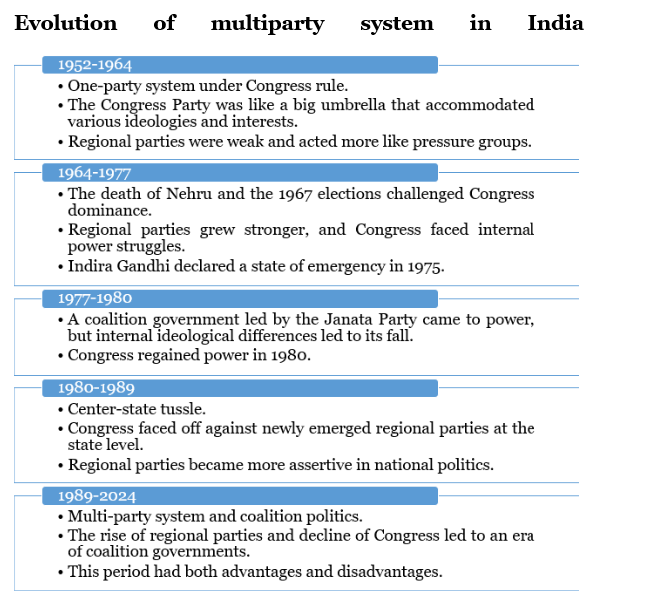7667766266
enquiry@shankarias.in
The recently Jammu and Kashmir Assembly passed a resolution urging the Union government to initiate dialogue with it’s elected representatives for the restoration of special status.
|
Criteria for National party recognition |
Criteria for State party recognition |
|
|

What are the factors contributed for rise of regional parties?
Political scientist Paul Brass argued that most of the national parties are regional parties spread over a few states. Hence, he called the party system in India an ‘unstable fragmented multiparty system’.
In the 1980s, state assembly elections elevated the electoral presence and influence of regional parties.

|
Centre state relation commissions |
|
The Indian Express | Multiparty System in India’s Political Landscape